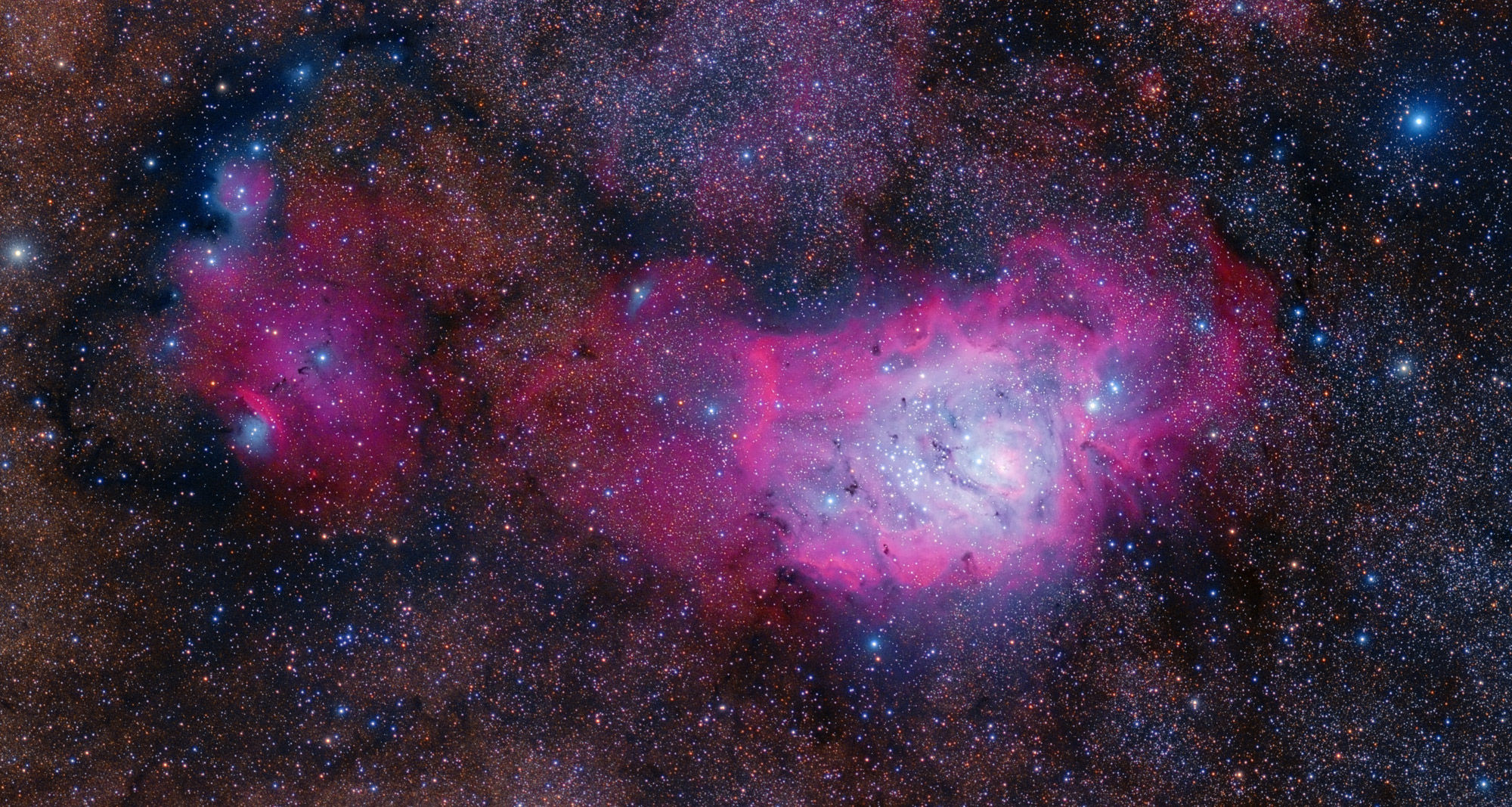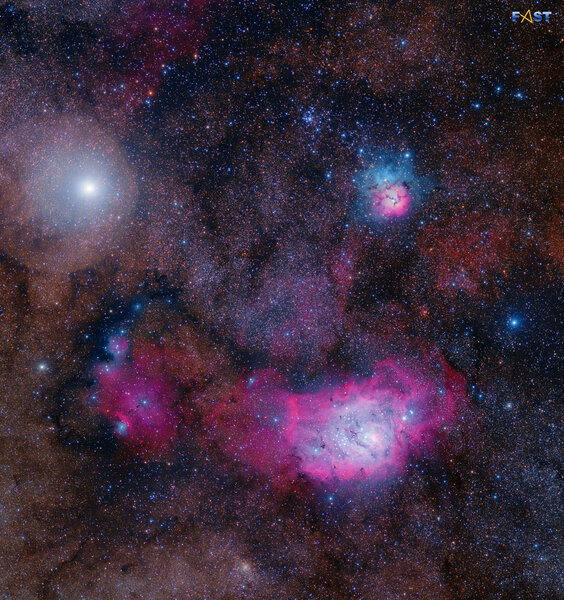Create a free profile to get unlimited access to exclusive videos, sweepstakes, and more!
A planet and a blooming trifid by a lagoon

Today, a glimpse of unspeakable beauty.
No, wait, scratch that. Today, a glimpse of utterly speakable beauty. Because I’m going to tell you about it.
This spectacular image is from astrophotographer Roberto Colombari. It shows a view toward very near the center of our galaxy in Sagittarius, which is a busy place indeed. We look through the densest regions of stars in this direction, like looking toward downtown of a big city. This line of sight also passes a large number of star-forming nebulae, and you can see an excellent collection them in this shot (and the full-res version is just jaw-dropping)
To the upper right of center is the Trifid Nebula, so named due to its resemblance to a thrice-rifted flower. The pink glow of warm hydrogen is interrupted by three lanes of dark dust, absorbing the light from stars and gas behind them. The bright spot in the center is actually a tight cluster of young stars, roughly 3,000 of them, in fact. Surrounding this stellar nursery is a blue glow; that’s dust and gas reflecting the light from the cluster but is too far to be sufficiently excited to glow on their own. We call the red gas an emission nebula, and the blue a reflection nebula.
Below that is the iconic Lagoon Nebula. This is also a cloud of gas excited by a young cluster of stars (called NGC 6530, which has about 4,000 stars in it). It looks bigger and more detailed than the Trifid because, well, it is. They’re both roughly 5,000 light years away, though the exact distances are difficult to measure, so the Lagoon is physically bigger than the Trifid. Also, they may be two clumps of a larger group of star-forming regions.
In this shot by Colombari you really get the impression that it’s a hole carved out of some larger structure, and in a sense that’s true. The fierce light from the young (probably 1 – 3 million year old), massive, hot, stars in the cluster blasts outward, eroding the colder, denser, darker material around them. The pink rim around the nebula is likely the edge of this effect.
Various other nebulae are scatter across the image, including IC 4685 to the left of the Lagoon (which sports a very interesting arc-shaped structure, which may be due to the winds from newly born stars plowing into and scooping up the gas around it).
Adding to the remarkable nature of this image is the fantastically bright star to the upper left, surrounded by a halo of light reflected inside the telescope. But that’s no star: It’s Saturn! At this time, in mid-September 2018, Saturn is passing through this region of the sky, and punctuates it impressively.
But… this shot is impossible to get as one image! Saturn is actually far brighter than you’d expect for how bright the nebulae are; if this were a single exposure the nebulae and other stars would be far dimmer. So how was this done? Colombari took some deep images of the Lagoon and Trifid back in July, when Saturn was not in the field, then again on September 9 when Saturn was there. He then combined all the images together to make this mosaic. Clever. In this way you can see far fainter stars and more detail in the nebulae than otherwise.
You may think this is cheating, but it isn’t, not really. Astronomers commonly mosaic together images taken on different nights, using different filters, different exposure times, and so on. You may also think, “but, well, this isn’t what it would look like…” but that’s true of any photo ever taken, ever. The camera doesn’t reproduce what the eye sees because it works in a different manner (especially a digital camera) — and in fact images like this commonly use a filter that selects for the pinkish glow of hydrogen, a filter that sees color in a far different way than our eyes do — so as long as the creator has tried to get the balance right and isn’t trying to actively fool you, then I’m OK with it.
Also? This image is just stunning. I’m certainly OK with that, too.




























